Start your meal with a cool, crisp cucumber salad that’s popular in Japanese cuisine.

Although I love Japanese food, I’m usually going straight for the sushi. I had never paid much attention to the appetizers or side dishes on the menu until a friend of mine ordered sunomono salad. I had never tried it, but was absolutely delighted when I took a few bites of this cool, tangy salad. Pickled vegetables are popular in Japanese cuisine, and this Japanese cucumber salad is often featured in bento boxes. Their vinegary, subtly sweet flavor brings a refreshing and delightful crunch to any meal.
I’ve also been to a few restaurants that have slight modifications to this classic recipe, which I’ve grown to love. Sunomono salad is a great base with room to grow. Some restaurants add seaweed to the salad, which adds a salty, crunchy flavor and texture. I’ve also seen the salad turned into more of a meal with the addition of shrimp or crab. Sunomono is so simple to make at home, which is why it’s become one of my go-to recipes when I’m craving Japanese food for lunch.
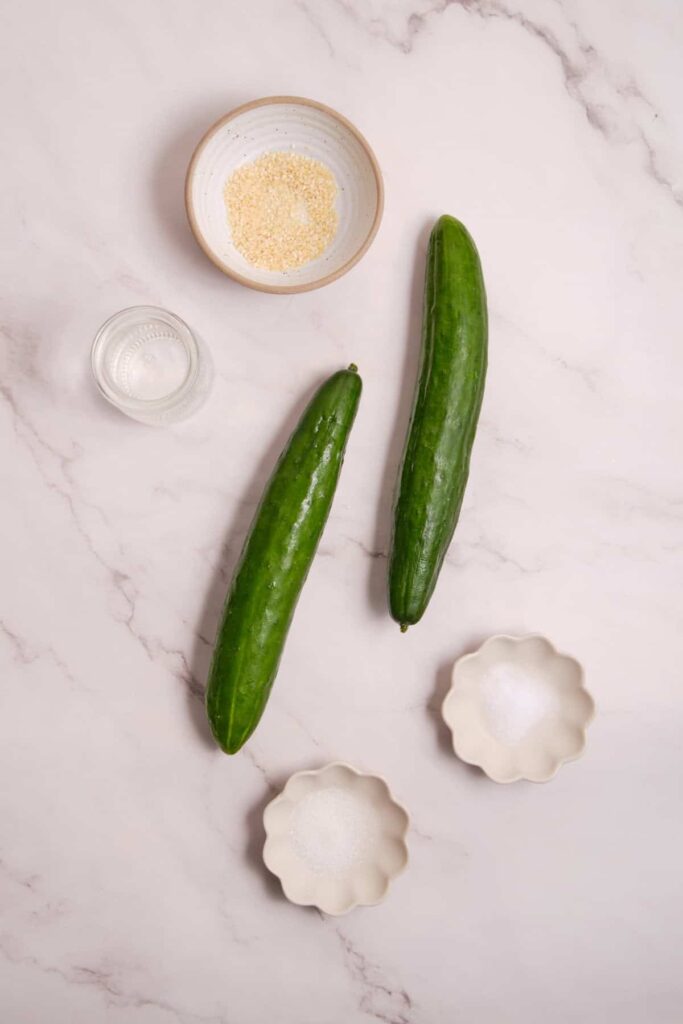
Is This Sunomono Recipe Healthy?
Sunomono salad is a healthy addition to any meal. Cucumbers have a high water content, making them extremely low in calories, while still helping to keep you hydrated. One medium cucumber actually provides a whopping 57% of your recommended daily value of vitamin K. Cucumbers are also a great source of vitamin C, magnesium, and potassium. With no fat and low carbs, this salad is a good addition to most diets.
If you want to make a Paleo version, it’s very simple to swap the rice vinegar for coconut vinegar or apple cider vinegar. You’ll also want to use coconut sugar, raw honey or stevia in place of sugar. Keep in mind that these changes will alter the taste of the salad, so you’ll want to experiment to find the best fit for you.
The Benefits of Using Rice Vinegar
Rice vinegar originated in China before making its way to popular Japanese cuisine. If you’ve cooked with rice vinegar in the past, you’re likely familiar with the mild yet tangy flavor profile. Rice vinegar contains acetic acid, which can help improve digestion. The acidic nature of vinegar can also help inhibit the growth of bacteria, offering an antimicrobial benefit.
For this recipe, you’ll want to make sure to have rice vinegar in your pantry instead of other types. It’s more mild and palatable compared to other varieties. The tanginess of the rice vinegar is a perfect complement to the sugar in this recipe, creating a delicious base for this salad.
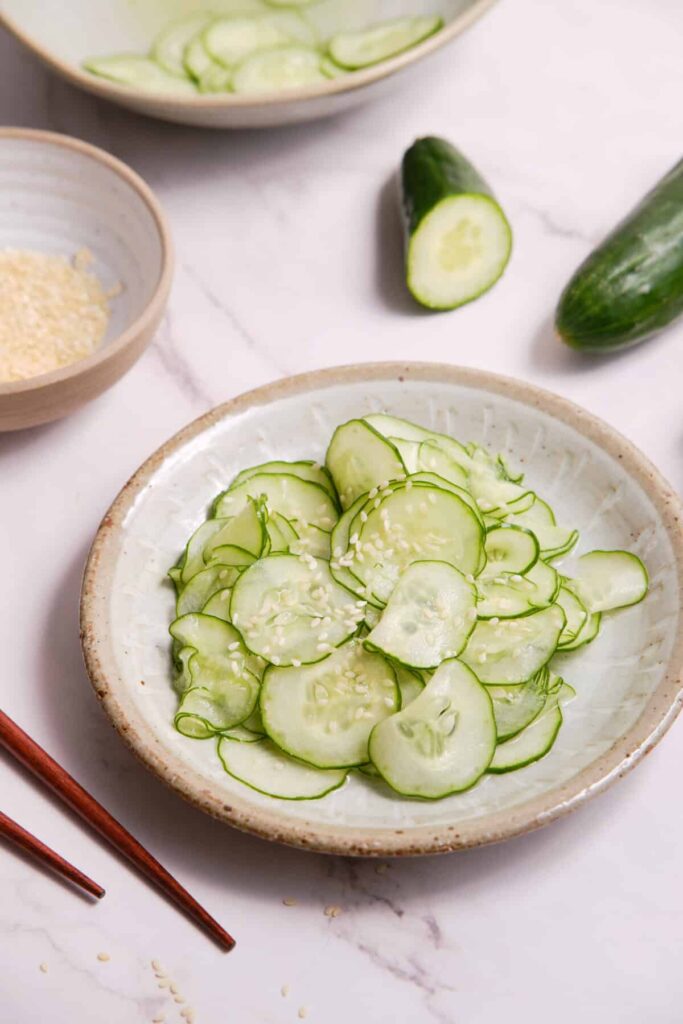
How Do I Store Leftovers?
Since sunomono is a crispy salad, it’s best eaten fresh to retain the bite. If you have leftovers, you can store them in a jar or other airtight container for up to 3 days.
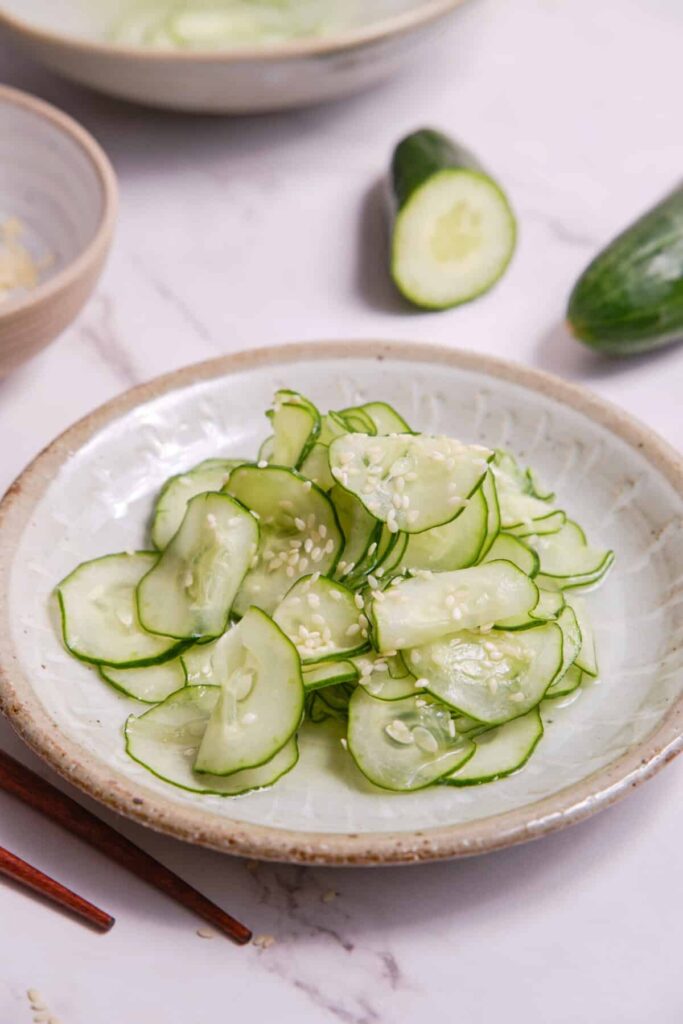
Serving Suggestions
I love cooking Asian-style meals at home, so this sunomono salad is the perfect start to any meal. When I’m having sunomomo as part of my lunch, I’ll usually eat it with a Spicy Kani Roll or an Avocado Sushi Roll. Sometimes, I cook up a bowl of Sushi Rice and top it off with the sunomono.
When I’m ready for dinner, I love to incorporate sunomono next to Seared Ahi Tuna Steak or Soba Noodles, since the flavors are so complementary. If you’re craving a warm dish after your sunomono, try having a bowl of Chicken Ramen Noodles. The saucy broth will taste delicious after the tangy base of cucumber salad.
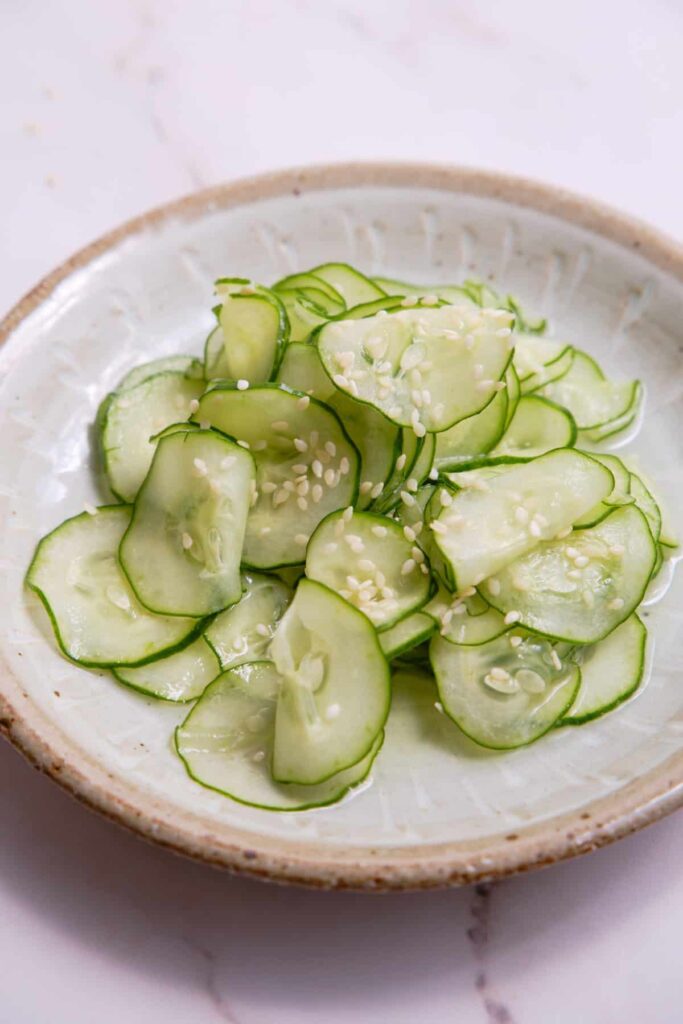
Recipe
Ingredients
- 2 Japanese cucumbers
- 2 tablespoons rice vinegar
- 1 tablespoon sugar
- 1/4 teaspoon salt
- 1 teaspoon sesame seeds optional
Instructions
- Thinly slice the cucumbers using a mandolin slicer or a sharp knife for uniform thin slices.
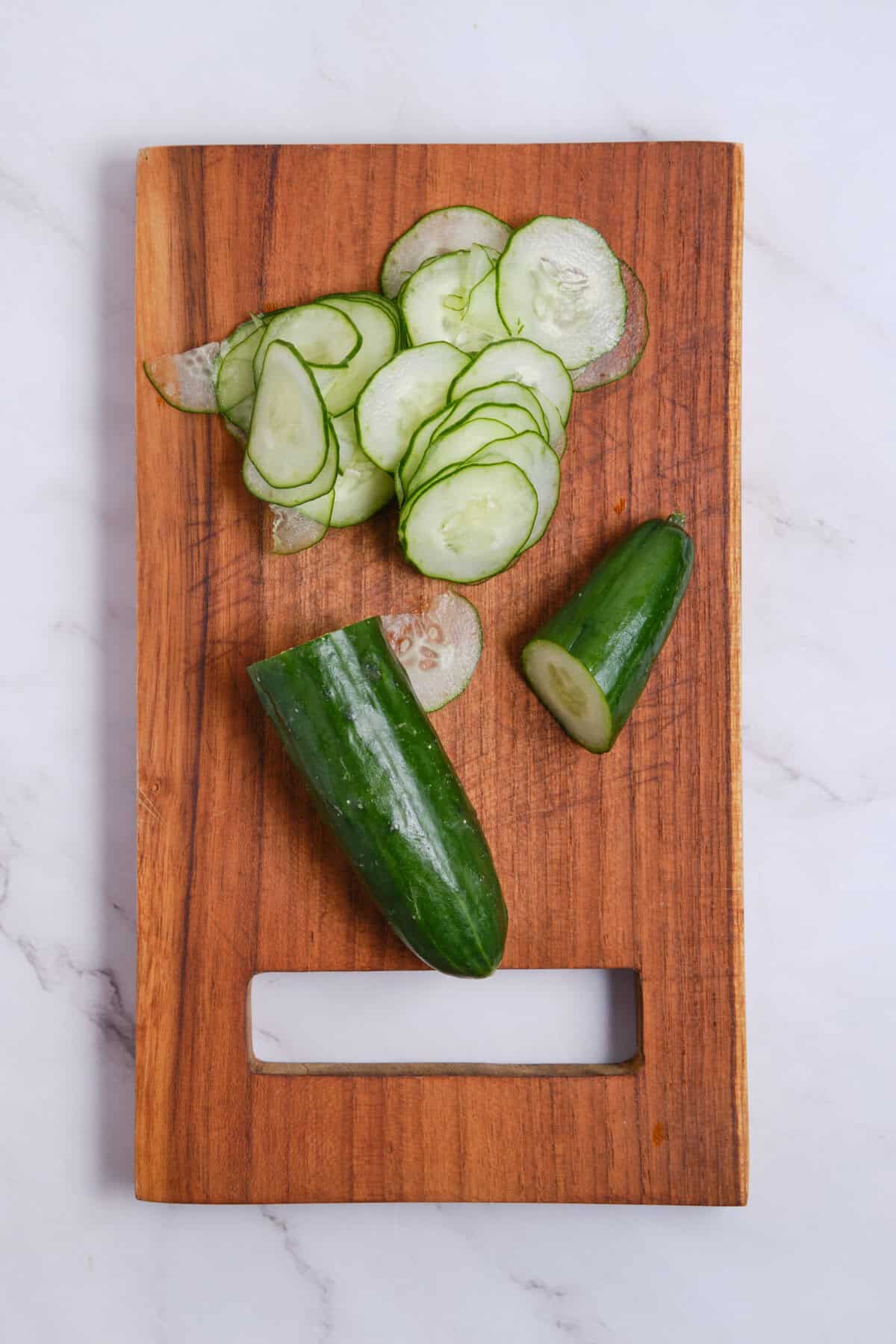
- In a mixing bowl, combine rice vinegar, sugar, and salt, stirring until the sugar and salt dissolve completely.
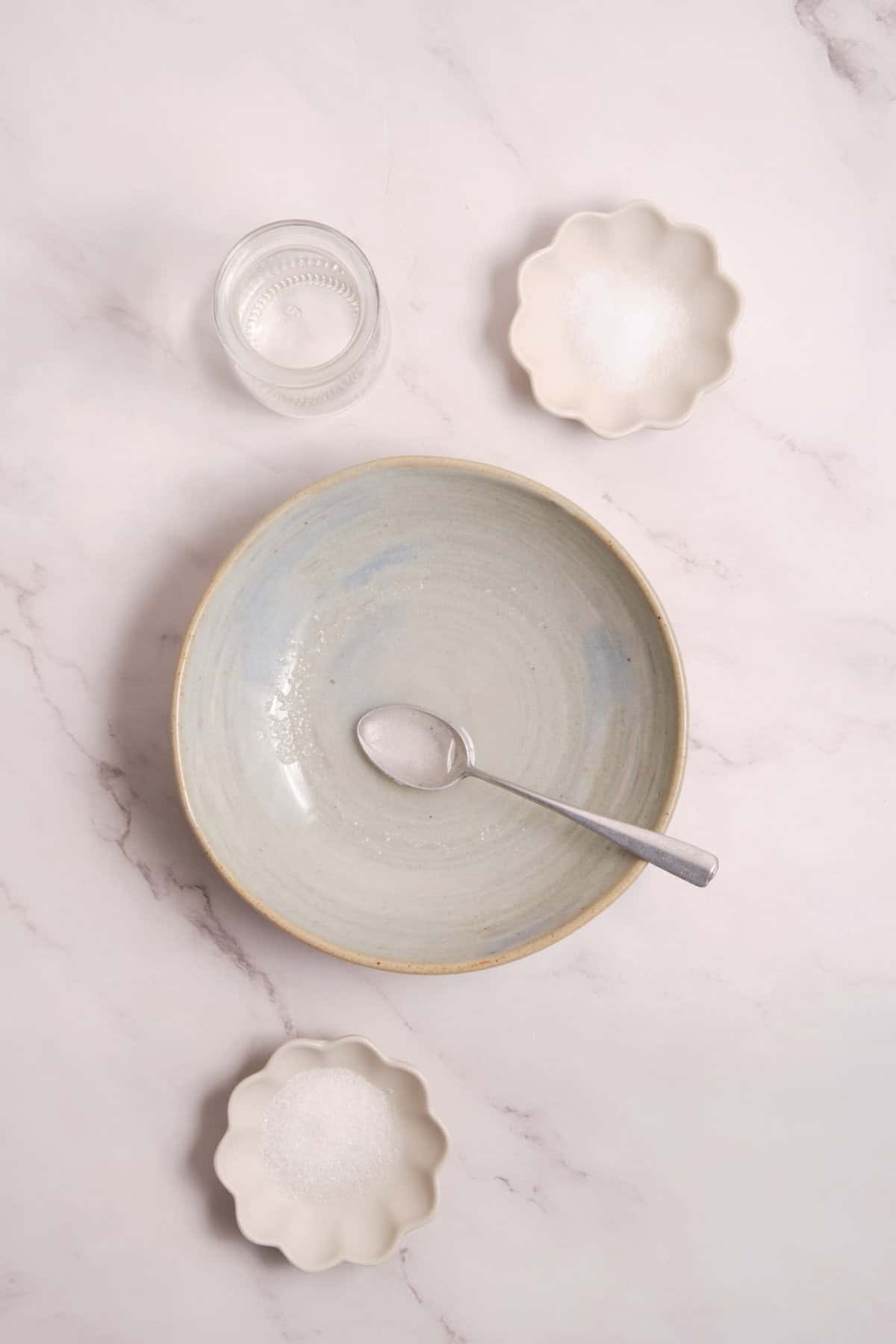
- Add the sliced cucumbers to the bowl with the vinegar mixture and toss to coat evenly. Let the cucumbers marinate for about 10 minutes.

- Serve the cucumbers garnished with sesame seeds, if using.
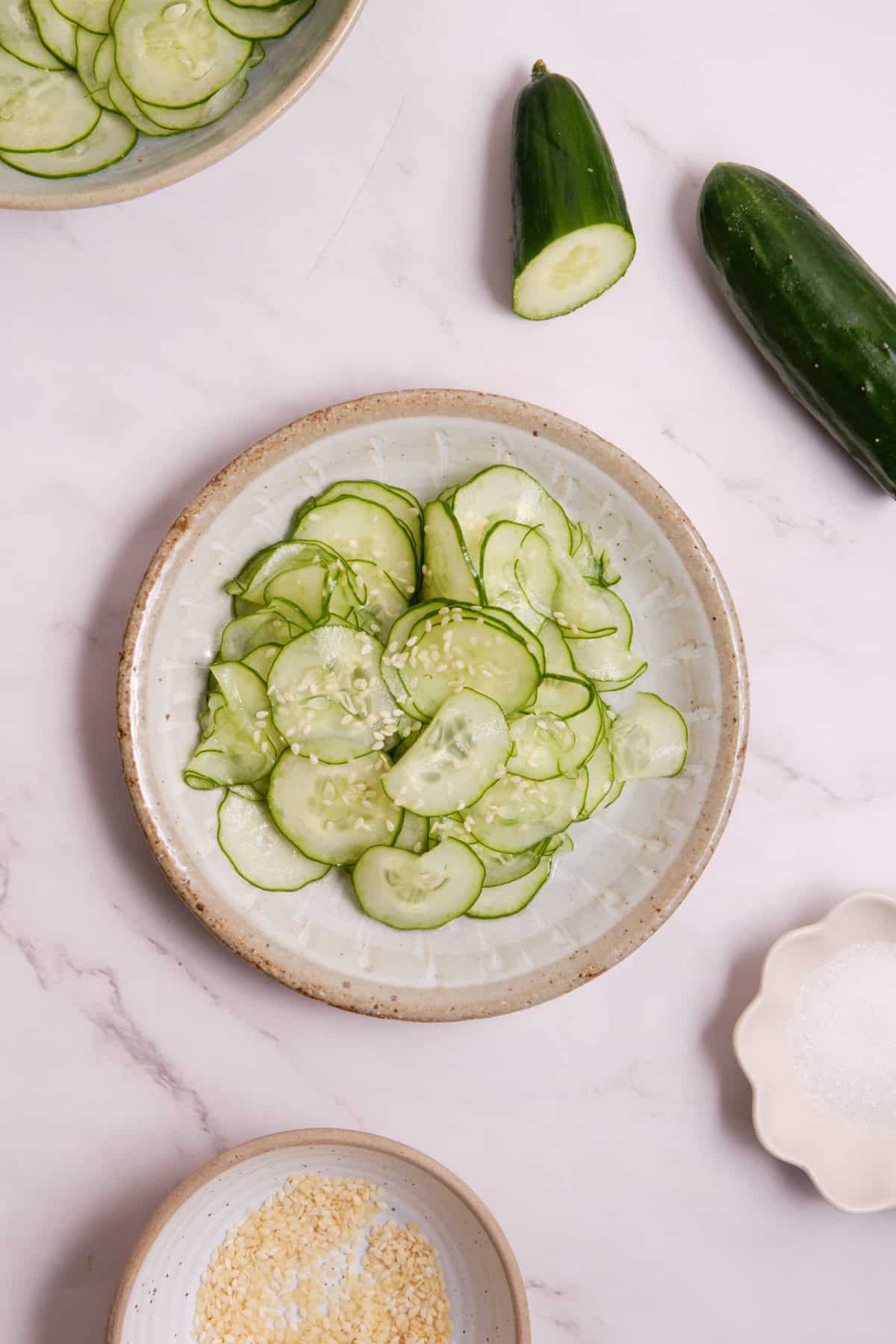
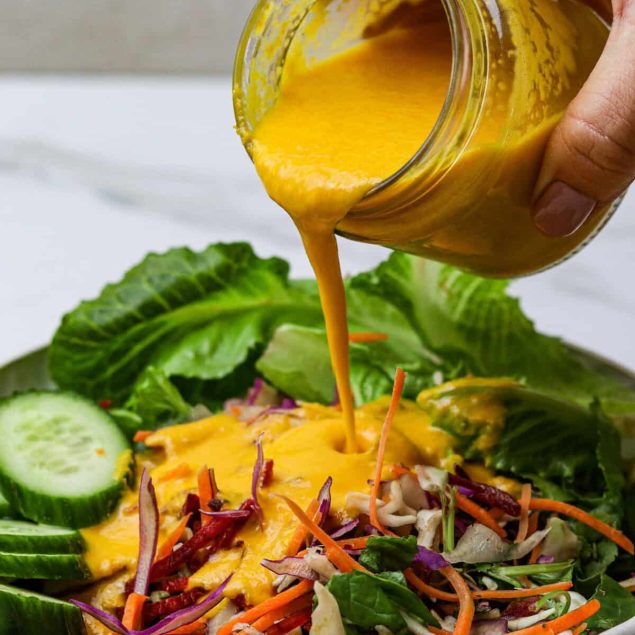
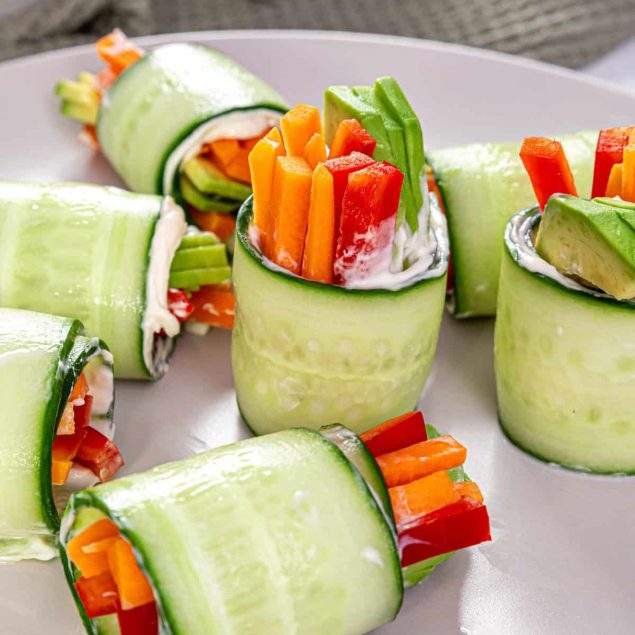
Leave a Comment